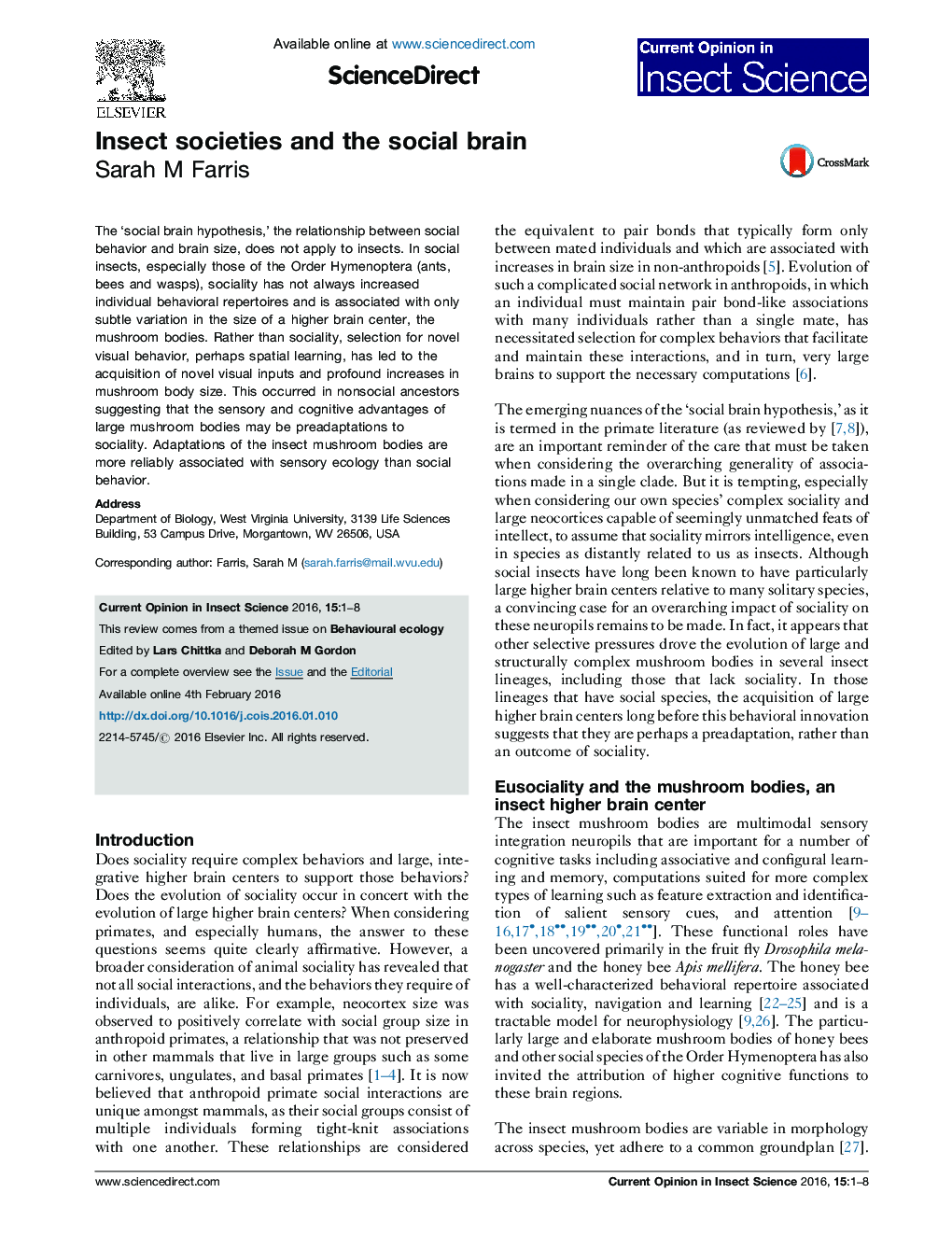| Article ID | Journal | Published Year | Pages | File Type |
|---|---|---|---|---|
| 6374063 | Current Opinion in Insect Science | 2016 | 8 Pages |
â¢The social brain hypothesis does not apply to insects.â¢Large, complex mushroom bodies are found in social and solitary species.â¢Behavioral and sensory ecology drive mushroom body expansion.â¢Insect sociality is associated with decreased behaviors and mushroom body size.
The 'social brain hypothesis,' the relationship between social behavior and brain size, does not apply to insects. In social insects, especially those of the Order Hymenoptera (ants, bees and wasps), sociality has not always increased individual behavioral repertoires and is associated with only subtle variation in the size of a higher brain center, the mushroom bodies. Rather than sociality, selection for novel visual behavior, perhaps spatial learning, has led to the acquisition of novel visual inputs and profound increases in mushroom body size. This occurred in nonsocial ancestors suggesting that the sensory and cognitive advantages of large mushroom bodies may be preadaptations to sociality. Adaptations of the insect mushroom bodies are more reliably associated with sensory ecology than social behavior.
